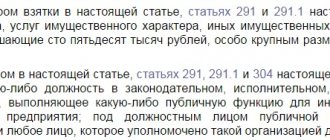Theft of items of special value is the process of unlawful taking of property of special value as a result of which the owner suffers damage expressed in monetary form. The crime entails liability under Article 164 of the Criminal Code of the Russian Federation.
Multi-channel free hotline Legal advice on criminal law. Every day from 9.00 to 21.00
Moscow and region: +7 (495) 662-44-36
St. Petersburg: +7 (812) 449-43-40
Determining Value
Items of special value include jewelry, reproductions of famous artists or other objects of art, as well as printed publications or text documents of scientific or historical importance.
The value of things is determined during an art criticism examination. An examination can be appointed both at the pre-trial stage and during court proceedings. Based on the results of the research, an expert opinion is issued.
The examination determines:
- The price of an item, expressed in monetary terms.
- Importance to science, culture or history.
Typically, items of heritage significance command a high price. Therefore, they are often the targets of theft.
When conducting an examination, various research methods are used to determine the characteristics of an object. Such methods include chemical technological analysis, digital or graphological analysis.
Characteristics of the item to be assessed:
- time and place of manufacture;
- indication of authorship;
- the material from which the item is made;
- style of performing the item;
- whether the item has been restored previously or not;
- original or copy;
- condition of the item at the time of examination.
To determine the heritage significance of an item, experts need to answer the following questions:
- How unique is the object for the country?
- If the author of the object has other works, then their value is determined.
- Does the object reflect the era in which it was made?
- Can the object be used for academic purposes?
- Is it possible to use the object for the further development of science?
After answering questions about the significance of the object and comparing them with the characteristics, the expert makes a conclusion about the value of the object and indicates its approximate cost. An assessment of the value of individual valuable items is also necessary to calculate the customs tax fee.
Second commentary to Art. 164 of the Criminal Code of the Russian Federation
1. This type of theft is identified as a special crime based on the specific subject of the crime. This can include both objects and documents that have special historical, scientific, artistic or cultural value (ancient manuscripts, unique museum exhibits, works of art and any other objects), as well as documents that, according to experts, have special value not because of its commodity value, but because of its uniqueness and importance for the development and continuity of culture or science. To establish the special value of the subject of a crime, an expert opinion is required.
2. The method of theft in this case does not affect qualifications.
3. The qualifying features of this crime are its commission by a group of persons by prior conspiracy or by an organized group (see comments to Article 158 of the Criminal Code) or destruction, damage or destruction of stolen objects or documents (see comments to Article 167 of the Criminal Code).
Legal characteristics
Theft of valuable objects can be committed in various ways - theft, robbery, robbery, embezzlement or fraudulent activity.
Like any offense, theft of especially important items has its own elements of crime:
- the object of the offense is the right of ownership of the object;
- the objective side is the process of abduction, regardless of its form;
- the subject of the offense is a person over 16 years of age;
- the subjective side of the offense is the presence of direct intent. With different forms of theft, the subjective side may differ slightly.
If the persons who committed the theft of objects of special value are not yet 16 years old, but are already 14 years old, then they are punished under Articles 158-163 of the Criminal Code of the Russian Federation.
To qualify an offense under Article 164 of the Criminal Code of the Russian Federation, the form of theft of an object is not important. But there are exceptions, for example, if the theft of objects was committed through a robbery with a weapon, in this case the offense is assessed in its entirety.
The main qualifying characteristics are described in Part 2 of Art. 164 of the Criminal Code of the Russian Federation, these include:
- An offense committed by a group of persons who have previously agreed to commit an offense.
- There were actions that resulted in damage, destruction or breaking of stolen property.
As a result of damage to property, it becomes impossible to use, repair or restore it.
What are especially valuable items?
The value of such things and documents (icons, paintings, books, works of art, known in catalogs of jewelry, coins, etc.) must be confirmed by an appropriate expert opinion.
Their significance for history, science and culture is important, while their value in monetary terms is a secondary factor. List of items prohibited for export from the country
, applies to any type of collecting. These are not only man-made values, but also mineralogical rarities, unique specimens related to paleontology, and also state-protected representatives of flora and fauna.
The value of each exported object is discussed individually, therefore the assistance of a lawyer
remains relevant when all necessary documents are completed. In some cases, a significant factor is not only the item intended for export, but also the way in which it came to the real owner. Very often, citizens do not even suspect that the valuable item offered by the seller is wanted.
Distinction from related crimes
Theft of valuable items can be committed in different forms:
- theft;
- fraudulent activities;
- misappropriation or embezzlement;
- robbery;
- robbery.
The form of theft does not affect the size and type of punishment, but it does affect the identification of the moment of completion of the offense, for example, with theft, the moment of the end of the offense occurs at the moment when the item is seized and the attacker has the opportunity to use the stolen item.
If things of special value were obtained through extortion, then such a crime is considered under Article 163 of the Criminal Code of the Russian Federation, since extortion is not theft.
Extortion is aimed not only at property relations, but also at the health of the victim, even to the point of murder. Taking possession of a car with driving documents or another type of vehicle without the purpose of stealing, that is, when the vehicle is stolen, is punishable under Article 166 of the Criminal Code of the Russian Federation.
In the event that the destruction of objects was committed through negligence, then liability arises under Article 168 of the Criminal Code of the Russian Federation. The type of punishment is assigned by the court.
Object and subject of theft of items of special value
The object of the crime does not have any characteristics that distinguish it from the object of all attacks on property.
At the same time, it should be noted that science proposes to understand the object of this crime in a fundamentally different way. So, according to S.M. Kochoi, such theft encroaches on public morality. T.R. adheres to the same position. Sabitov, proposing to transfer the composition provided for in Art. 164 of the Criminal Code of the Russian Federation, in the corresponding chapter of the Code.
There is certainly a certain reason for this understanding of the object, since the subject of the crime is very specific. And public morality, of course, suffers in the case of theft of documents or items of particular value. However, property relations also suffer. The two specified objects - property and public morality - are always harmed when these crimes are committed. Which of these objects should be recognized as the main (basic), and which – albeit mandatory, but optional? I'm afraid there is no correct answer to this question. Therefore, is it worth changing the already familiar arrangement of the composition, especially since it is in Ch. 21 of the Criminal Code of the Russian Federation provides for most of the basic concepts that characterize this crime (primarily the concept of theft, of course)? In my opinion, the question is rhetorical. Not worth it.
And if we are to follow the path of changes in the criminal law in relation to this crime, then perhaps it makes sense to listen to the proposal formulated by E.V. Medvedev, calling for the exclusion of Art. 164, providing for all thefts an additional special qualifying feature - “for the purpose of appropriating cultural property.” Such a decision is good in that it will end the endless debate about how to understand theft within the framework of Art. 164, when the crime is completed and at what age responsibility for this crime begins (see below).
The subject of this type of theft is objects and documents that have special – historical, scientific, artistic or cultural – value.
It is noteworthy that the legislator, when characterizing the subject of this crime, refused to use the concept of someone else's property as the subject of all other thefts. This is explained by the fact that the subject of theft under Art. 164 of the Criminal Code of the Russian Federation is specific and does not always correspond to the characteristics of the subject of theft formulated above. Perhaps the only thing that it has in common with the subject of specific forms of theft is, as a rule, a relatively high monetary or material value, derived not from the intended purpose of the subject (satisfying the ordinary needs of people), but from its special value, which is devoid of a utilitarian nature. This means, as indicated, historical, scientific, artistic or cultural value.
The subject of theft may be documents that, as a rule, are not recognized as the subject of theft, robbery and other forms of theft. The objects are, for example, skeletons of prehistoric animals, incunabula - first printed books, and works of antiquity or art (unique musical instruments, ancient tableware, paintings, etc.), etc. It is quite difficult to classify them as ordinary property.
The cost of the items of theft provided for in Art. 164 of the Criminal Code of the Russian Federation, as a rule, is very high and can exceed the especially large amount of theft established by Note 4 to Art. 158 of the Criminal Code of the Russian Federation. However, it is not decisive or even in any way determining when attributing the subject of a crime to the subject of Art. 164 of the Criminal Code of the Russian Federation. The main thing is the special value of the object, which, to a first approximation, is not of a material nature, but usually directly depends on the historical, scientific, artistic or cultural value.
It should be noted here that criminal legislation, unfortunately, is not consistent with positive legislation, which gives the concept of especially valuable objects and which uses the concept of “cultural values” as a generic concept to designate all specially protected values. In criminal legislation (in particular, in Article 164 of the Criminal Code of the Russian Federation), the concept of cultural values is also used, but it does not cover other types of values. They are named separately by the legislator - historical, artistic, scientific values. Criticism of the legislative definition of the subject of the crime provided for in Art. 164 of the Criminal Code of the Russian Federation, sounded more than once), and in many ways it is fair. Of course, it would be necessary to use Art. 164 of the Criminal Code of the Russian Federation the concept of “cultural values”.
The concept of cultural property is given in the Federal Law of April 15, 1993 N 4804-I “On the export and import of cultural property.” Cultural assets are movable objects of the material world located on the territory of the Russian Federation, namely: cultural assets created by individuals or groups of individuals who are citizens of the Russian Federation; that are important for the Russian Federation and created on the territory of the Russian Federation by foreign citizens and stateless persons living on the territory of the Russian Federation; discovered on the territory of the Russian Federation; acquired by archaeological, ethnological and natural science expeditions with the consent of the competent authorities of the country where these values come from; acquired as a result of voluntary exchanges; received as a gift or legally acquired with the consent of the competent authorities of the country where these values originate (Article 6).
Items of historical heritage (objects or documents of special historical value) are historical values, including those associated with historical events in the lives of peoples, the development of society and the state, the history of science and technology, as well as those related to the life and activities of outstanding personalities (state , political, public figures, thinkers, scientists, literature, artists).
The Law classifies artistic assets as objects of artistic property (objects or documents of special artistic value), including: paintings and drawings entirely handmade on any basis and from any materials; original cultural works from any materials, including reliefs; original artistic compositions and installations from any materials; artistically designed objects for religious purposes, in particular icons, engravings, prints, lithographs and their original printed forms, works of decorative applied art, etc.
The law also highlights the concept of archaeological values, which are specifically included in Art. 164 of the Criminal Code of the Russian Federation is not mentioned, but it does not contain the concept of scientific values. It is obvious that objects of archaeological heritage (objects and their fragments obtained as a result of archaeological excavations) can be classified as scientific values, but scientific values, of course, are not exhausted by them. AND I. Kozachenko, for example, notes that “rare collections, specimens of flora and fauna, objects of interest for mineralogy, anatomy, polyartology, etc. have scientific value.”
The special historical, scientific, artistic or cultural value of stolen objects or documents (regardless of the method of theft) is determined on the basis of an expert opinion, taking into account not only their value in monetary terms, but also their significance for history, science, art or culture (clause 25 of the resolution Plenum of the Supreme Court of the Russian Federation of December 27, 2002 N 29).
Sometimes between the analyzed article and Art. 226 of the Criminal Code of the Russian Federation - theft of weapons - collisions arise: it is necessary to qualify the theft of a functioning, usable, combat-ready weapon, which at the same time falls under the concept of cultural value. On the one hand, the theft of most types of dangerous weapons under Sec. 21 of the Criminal Code of the Russian Federation does not fall under, since it encroaches on another object - public safety. But, on the other hand, Art. 226 of the Criminal Code of the Russian Federation does not provide for tougher penalties for the theft of weapons that are cultural property. T.R. Sabitov resolves this conflict in favor of Art. 164 of the Criminal Code of the Russian Federation, which, in his opinion, should be applied here. Still, I think we should take into account the purpose of the act, why the perpetrator needed such a unique weapon. If the goal is selfish, there is no doubt about the application of Art. 164 of the Criminal Code of the Russian Federation no. If the person intended to use this weapon for its intended purpose, Art. 226 of the Criminal Code of the Russian Federation.
In science they propose to expand the understanding of the subject of the crime provided for in Art. 264 of the Criminal Code of the Russian Federation, also including land. Here is what A.V. writes about this. Shulga: “The transfer of plots of land from the national property to private ownership entails the inclusion of such objects in commodity-money circulation, which presupposes their financial valuation, regardless of the degree of development and development... At the present time, land has a market value regardless of the amount of labor invested in it ... Based on the laws of market relations, encroachments on natural environment objects that have a market value should be classified as crimes against property.” The author's arguments about market relations and the cost of land certainly correspond to modern realities. However, introducing the proposed changes will require an almost complete revision of the criminal law, in particular not only Ch. 21, but also Ch. 26 “Environmental crimes” of the Criminal Code of the Russian Federation. In addition, I think that the same changes will be required in relation to subsoil, water and other natural resources. The concept of theft will also need to be changed, because, for example, it doesn’t fit in my head how the same land can be stolen. It seems that this is the situation about which they say “the game is not worth the candle.” The time has not yet come for such radical changes. Yes, they are not very strong and are required even from the point of view of criminal legal protection of these resources (it may be insufficient for certain elements of environmental crimes, but this can be corrected by tightening sanctions, which is quite easily done in our Russian reality).
Punishment and responsibility
During the time of the Union of Soviet Socialist Republics, the only possible punishment for theft of especially valuable items was restriction of freedom. Currently, according to current legislation, the following penalties can be applied:
- forced labor for up to 5 years and restriction of freedom for up to 1 year;
- imprisonment for a term of up to 10 years and payment of a penalty in the amount of up to 500 thousand rubles;
- imprisonment for up to 10 years and payment of a fine in the amount of salary or other income for 3 years.
If the offender is convicted under Part 2 of Art. 164 of the Criminal Code of the Russian Federation, then he may face:
- Prison term up to 15 years and payment of a penalty in the amount of up to 500 thousand rubles.
- Imprisonment for up to 15 years and payment of a penalty in the amount of salary or other income for 3 years.
Imprisonment may be imposed together with fines, or may be the only punishment.
What to do and where to go if a theft is detected?
If the fact of such an attack is discovered, it is necessary to take measures to preserve evidence of what happened, and then immediately contact law enforcement agencies, whose task will be to investigate what happened.
Starting from the very moment of theft, if it occurs in front of the victim or other persons, you need to call the police and report what is happening . According to clause 3, part 2, the preliminary investigation is carried out by investigators from the Russian Ministry of Internal Affairs.
Based on this, when identifying the fact of an encroachment, it is important to do the following:
- To call the police.
- Take measures to preserve evidence of the act. It is important not to change this evidence, but to preserve it, eliminating the possibility of damage.
- Upon arrival of the police officers, explain to them the circumstances of the case in detail and fully, and then write a statement about the crime, the fact of which the police will carry out an investigation and, as a result, initiate a criminal case.
Where to apply?
The application can be written on the spot by filling out the form provided by the arriving police or by contacting the police department. After registering the application, it will be sent for verification, which will last about 10 days, after which the materials, provided they are sufficient to initiate a criminal case, will be sent to the investigator of the Ministry of Internal Affairs.
It is important to contact the police department that serves the crime scene address.
Application requirements
Since a statement of a crime is a reason to initiate a criminal case, it must contain certain information, the absence of which may lead to a refusal to initiate a criminal case.
The application must indicate the details of the victim (full name, address, passport details, phone number, etc.) and the event of the crime (describe briefly what the assault was, when and what time it happened, who committed it, if known, what its consequences are, expressed in total ratio and so on). The date must be entered as the one on which the application is submitted directly to the police. It is extremely important to sign the application, as the absence of a signature makes it an invalid document.
Thus, it provides for an encroachment on a specific object, the presence of an economic characteristic for which is not necessary . The subject of such an act can be things of special value: works of art, museum exhibits, ancient manuscripts, etc. The particular social danger of the act is associated with the significance of the stolen property for the development of science, culture and art.










